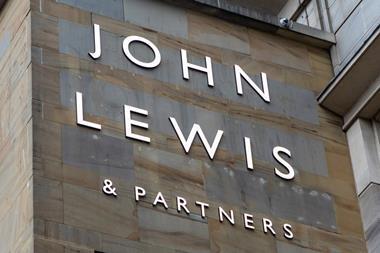Debates around the future direction of AI have been lifted out of the realms of academia and advanced technology and into the mainstream. So what’s changed? Why the hype? And why should the retail industry care? Ocado Solutions chief executive Luke Jensen explains all.
1613: First use of the word ‘computer’ to describe a person who performed calculations.
1822: Charles Babbage invents the ‘Difference Engine’ (often recognised as the first computer) with later contributions from Ada Lovelace, widely recognised as the first programmer. Humans are not put out of business.
1943: Colossus, the first electronic computer, gets to work cracking German codes. Humans are still in business.
1983: The Lotus 1-2-3 spreadsheet program is launched. Humans are still in business (indeed there have never been more accountants, bankers and consultants…)
1997: Chess computer Deep Blue beats reigning world champion Gary Kasparov. Humans are still in business (in fact, chess is enjoying fresh popularity 25 years later).
2023: End-of-humanity stories driven by AI sweep across the internet. It feels like we’ve been here before…
For many, ‘AI’ is often treated simply as a catch-all term for technologies that the average person doesn’t understand.
But today, when the tech industry talks about AI and – in the context of today’s news cycle – generative AI, we’re talking mainly about machine learning.
In essence, this is the ability of computers to learn and generate emergent outcomes from data inputs without direct human instruction.
In recent months, debates around the future direction of AI have been lifted out of the realms of academia and advanced technology and into the mainstream.
So what’s changed? Why the hype? And why should the retail industry care?
There’s no doubt that the tech is advancing quickly, but not so fast that the past few months represent a real, accelerated step-change in AI.
In fact, there’s a good case to say that the single most important trigger behind AI in the news cycle is not even the tech behind apps like ChatGPT. It was the addition of a user-friendly interface to that tech, making it truly accessible to anyone.
“The single most important trigger behind AI in the news cycle is not even the tech behind apps like ChatGPT. It was the addition of a user-friendly interface to that tech, making it truly accessible to anyone”
Suddenly billions of people with no technology background have access to a toolkit that until now was solely the domain of machine-learning engineers. In retail terms it’s the equivalent of adding a shop window.
But let’s be clear, industrial applications of machine learning are not new. Even the latest hype around ‘deep learning’ – such as large language models powering ChatGPT – is based on an architecture described in a paperback in 2017 (all those years ago).
Today AI and machine learning permeate many of the technology solutions that Ocado deploys in our UK retail business and in the online businesses of our partners around the globe, with real economic impact.
Two examples: we are now deploying robotic picking arms that are using AI to learn how best to pick items as varied as a bag of lemons or a chilled plastic milk bottle.
While some years back you would have needed to program specific picking algorithms for each of the 45,000 products in the range, making widespread application uneconomic, today the robots are self-learning how best to pick each item.
No direct human intervention is needed to learn how to pick a new product. The deployment of these picking arms will increase the productivity of our customer fulfilment centres by more than 50%.
We also use AI for our supply chain tools to self-generate increasingly accurate forecasting tools. These tools are at the heart of how Ocado achieves industry-beating waste levels, up to 50% lower than norms. This is not only a big economic benefit, but a significant environmental and social one.
These examples are all rather far from The War of the Worlds. They are much more real – here today and creating real benefits. And that is just scratching the surface of how we think about AI.
But the current debate around AI raises some questions for the grocery industry and retail more widely.
Slow take-up in grocery
It’s no secret that at a sector level grocery has long been among the slowest industries to invest in boosting productivity. There are lots of reasons for this – intractable business models, complex infrastructure and supply chain challenges, and availability of labour.
This orthodoxy is under pressure. General inflation, rising labour costs across global markets and structural challenges exposed by the pandemic are all putting long-term productivity investment at the top of the agenda.
AI is already a crucial part of the solution and will become even more so in the years to come. But the question of ‘how’ still remains for many.
I was interested to read a recent study by FMI in the US highlighting some of the big challenges grocers see in AI adoption. Some 69% of respondents cite proof of performance/unclear ROI as an inhibitor to investment, while 68% are concerned about limited infrastructure (having the right data and tools).
These aren’t unreasonable questions to ask, but they reflect an underlying sense of an industry that’s late to table on tech R&D.
One lesson from Ocado is that it helps to have a ruthless, value-first approach to AI development and deployment. Focus investment on data-heavy, high-economic-impact challenges like stock management and logistics.
So it’s important to drop the sci-fi, take a hard look at your operations and P&L, and start thinking about how these new step-ups in technology can help transform the way you run your business.
If you don’t, your business may not survive.































No comments yet